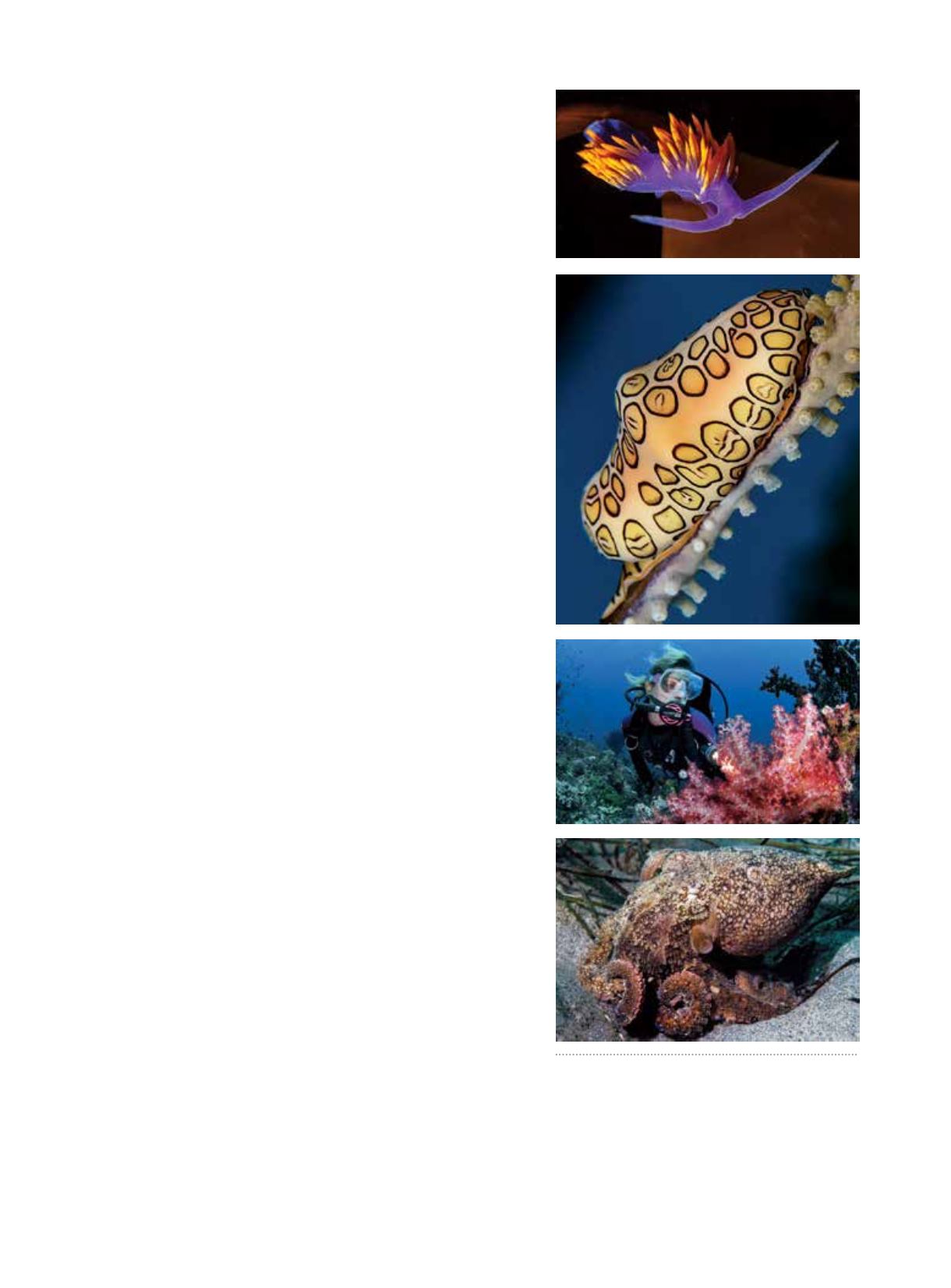

allow consistent, high-quality still photography. And carrying both
types of lighting meant lugging around an inordinately bulky rig.
Recently, however, developments in LED (light-emitting diode)
technology have allowed high-output, compact lights to become
mainstream. At last, underwater shooters have access to light
systems that can support both still and video imagery.
FEATURES OF LED LIGHTS
Characteristics used to describe LED lights include lumen
rating, burn time, beam angle, color-rendering index and color
temperature. All must be considered from a practical standpoint
when selecting a light for underwater still photography. Some units
are tested according to the specification for flashlight performance
issued by the American National Standards Institute and the
National Electrical Manufacturers Association (ANSI/NEMA
FL 1-2009 standard), which certifies that a light will perform as
intended (e.g., an FL 1-compliant light is guaranteed to maintain its
full lumen output throughout its burn time).
The
lumen rating
defines the amount of visible light emitted. In
other words, this rating gives you the best indicator of an LED light’s
power. While a few options exist that provide an output similar
to strobes (8,000 lumens or more), for now the price tags of LED
lights with this level of performance will deter many photographers.
A light’s lumen rating represents its output at the highest power
setting, so choosing a lower power setting decreases the light output
proportionally. This may also affect a light’s
burn time
(or run
time), a characteristic that describes how long the light will last at a
specific lumen output, usually the light’s maximum, until it reaches
10 percent of the initial output measurement.
Beam angle
is the angle at which the strength of the beam is
half of the light’s maximum strength (the maximum strength is
generally at the center). This is also known as the full-width at
half-maximum (FWHM) potential. This represents one of the key
differences between high-end strobes and LED lights intended for
video use. Strobes, which are used to capture a momentary portrait
or behavior, generally have a wider beam angle (110–120 degrees is
common) than do LED lights (typically less than 100 degrees) since
video is commonly used to capture dynamic subjects. Complicating
this issue is the refractive index of water. When lights with flat lenses
are submerged, the beam angle is reduced by as much as 33 percent,
but many manufacturers report only the topside beam angle,
which can confuse potential purchasers. A few manufacturers have
made an effort to simplify matters by measuring and reporting the
underwater beam angle; others have designed lights with a domed
lens to eliminate this complication altogether.
Color rating
, also known as
color-rendering index
(CRI),
defines a light source’s ability to accurately depict the color spectrum
compared to an ideal reference light of the same color temperature.
CRI is expressed on a scale from 1-100; the higher the number, the
more accurately colors will be reproduced. It is generally thought
that a CRI of 90 or above is desirable for professional-level topside
imaging. CRI is distinct from
color temperature
, expressed in
degrees Kelvin, which characterizes light as warmer/yellower
(lower values) or cooler/bluer (higher values). Most manufacturers
ALERTDIVER.COM|
103
From top:
Using lights of differing strengths works
well to achieve interesting shadows for macro subject
matter such as this Spanish shawl nudibanch. Small,
light-colored creatures such as this cowrie make good
macro subject choices when shooting with LED lights.
Wide-angle photography in bright, clear water might
require shooting toward midwater as opposed to
shooting upward toward the sun. This octopus shows
that smaller subject size ensures that photographers
are less limited by relatively narrow beam angles.
















